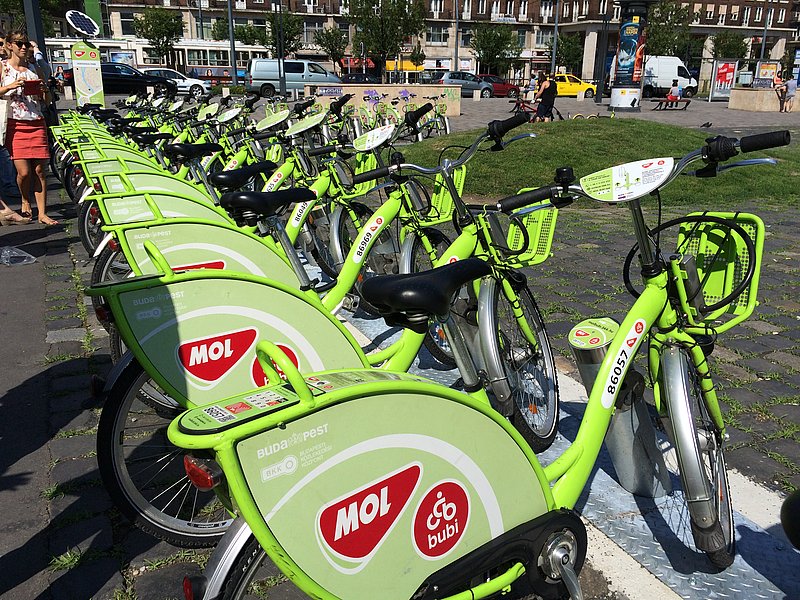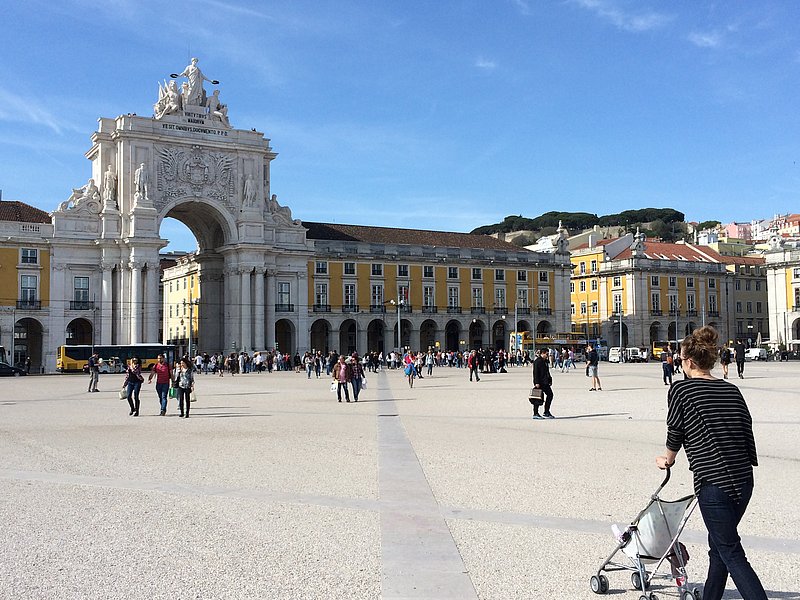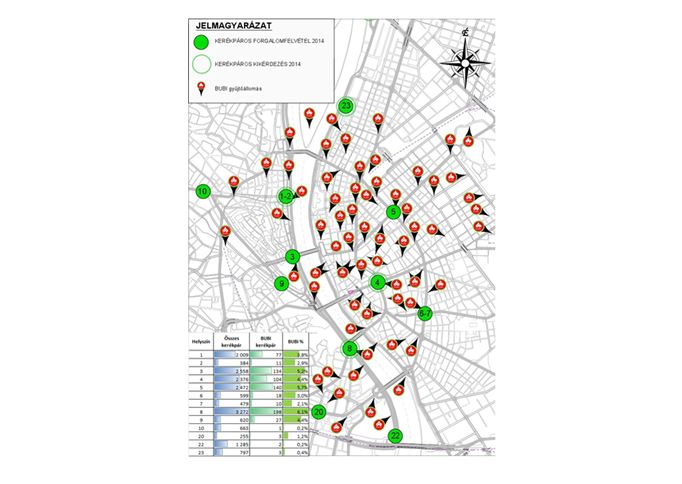
Bike share bikes in Budapest © Rupprecht Consult, Bonnie Fenton, 2015

Public space in Lisbon© Rupprecht Consult, Bonnie Fenton, 2016

Bike share stations incorporated in a macroscopic transport model© BKK Budapest Centre for Transport
The goal of FLOW was to put walking and cycling on an equal footing with motorised modes of transport when it comes to the ability to reduce urban congestion. In order to achieve this, FLOW made improvements to existing transport modelling tools and developed an impact assessment tool which assesses the impact of walking and cycling activities on urban transport network performance (i.e. congestion) as well as on other socio-economic factors.

Duration 05/2015 – 04/2018
Website http://www.h2020-flow.eu
Coordinator Rupprecht Consult GmbH
FLOW was the first project explicitly linking walking and cycling with congestion reduction. The project took a trans-disciplinary approach to congestion reduction, aiming to integrate the FLOW methodology and congestion assessment tools into the current standard transport impact analysis process. Its objectives were:
The FLOW Partner Cities (Budapest, Dublin, Gdynia, Lisbon, Munich, Sofia) applied improved microscopic and/or macroscopic transport simulation models developed in the project. FLOW also connected directly with the private sector (especially major urban transport consulting and planning companies), encouraging them to take an active role in innovative congestion reduction by integrating walking and cycling measures in the congestion-related products and services they offer. Building on these results, the tangible outputs of FLOW include:
We coordinated the project and were responsible for FLOW’s administrative and financial management. We also conducted the implementation scenarios and take-up for congestion busting measures in FLOW (work package 3) and provided technical support in implementation for the cities of Munich (Germany) and Lisbon (Portugal). In addition, we were responsible for training, exchange and network building activities (work package 4).
Bonnie Fenton
+49 173 726 3681
b.fenton@rupprecht-consult.eu
How walking and cycling can reduce congestion: tools for cities <link https: www.youtube.com>